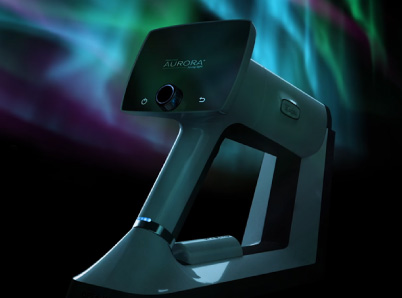Diabetic retinopathy (DR) remains the leading cause of loss of sight among working-age US adults. Up to 21% of type 2 diabetics already have DR when their diabetes is first diagnosed. Nearly all type 1 diabetics and over 60% of type 2 diabetics will develop DR in their first twenty years of living with the disease. Unfortunately, intensive efforts to control diabetes often exacerbate existing DR, especially when diabetes care results in a reduction in HbA1C of 2% or more. Added to these dismal statistics is the reality that fewer than 50% of patients follow the recommendations of their primary care physicians (PCPs) to get screenings with an ophthalmologist or optometrist.
The Wisconsin Study of Diabetic Retinopathy tells us that approximately 700,000 Americans have been diagnosed with proliferative diabetic retinopathy, with an annual incidence of 65,000. Approximately 500,000 persons in the United States have been diagnosed with clinically significant macular edema, with an annual incidence of 75,000. Diabetes is responsible for approximately 8,000 eyes becoming blinded each year.
Modern medicine does not have to settle for these results. With the right technology, primary care providers can make a difference in detecting DR for timely treatment. Here are ten tips for primary care providers seeking to ensure that their DR patients get the treatment they need.
1. Bring DR screenings to patients.
Optomed’s Aurora fundus imaging cameras bring DR detection to the PCP’s office. The Aurora isn’t a tele-retinal exam. There is no need to wait for an off-site specialist to review oft-blurry images to know whether a referral is needed. With the Aurora, screening to determine whether the patient needs to be sent to an ophthalmologist for a DR diagnosis is accomplished in real time.
2. Provide every patient who has diabetes with multiple screenings for DR every year.
Diabetic patients making extraordinary progress in controlling HbA1C are often at risk for initiation or aggravation of DR. When a DR screening is a part of a primary care exam, there is no need to limit detection efforts to once a year or to when the patient reports loss of vision.
3. Remove patient financial barriers to DR detection.
Most insurance plans offer a minimum number of primary care visits per year without a copay. DR screenings can be included in those primary care visits and billed to insurance at no out-of-pocket cost to most patients. Medicare and Medicaid also cover DR screenings.
4. Take advantage of financial incentives to include DR screenings in primary care.
In the current financial climate, primary care practices need additional sources of revenue. PCPs can make DR screenings a billable part of every diabetic patient visit, adding tens of thousands of dollars to practice revenues every year. Examples of billing scenarios in which a patient receives a retinal exam in their PCP’s office with their CPT codes include:
- Reimbursement code 92250, fundus photography with interpretation and report, reimbursed $52.25 to $74.3
- Reimbursement code 92227, remote screening for detection of retinal disease, reimbursed $12.97 to $20.12
- Reimbursement code 92228, remote imaging for management of active retinal disease, reimbursed $31.44 to $43.41
5. Offer DR detection without dilating eyes.
Patients overwhelmingly prefer non-mydriatic eye exams. They can be in and out of the office faster, increasing the convenience of screening for the patient and making the flow of patients easier for office staff.
6. Delegate DR screenings to support staff.
Anyone can be trained to use the Aurora camera. Non-professionals can even use it under PCP supervision. Lion’s Clubs and similar community organizations have become involved in community-wide DR screening efforts with the Aurora.
7. Use regular DR screenings to reinforce the importance of regular eye care.
One survey found that 60% of patients thought all vision changes are a normal part of the aging process. With Optomed, the entire care team can more easily impress upon their patients the awareness that vision changes (cataracts, difficulties with night vision, changes in color perception, floaters, and blurred vision) are not normal parts of aging.
8. Integrate telemedicine into diabetic retinopathy prevention
Optomed technology includes equipment with teleophthalmology capabilities.
9. Integrate DR screenings with Optomed fundus cameras and EHRs for ease in scheduling, billing, and follow-up.
Thousands of PCPs share Optomed’s mission to save the sight of potentially millions of people. With the right technology, primary care providers can make a difference in detecting DR for needed referrals to timely treatment. Optomed is the answer for improved outcomes in primary care for diabetic retinopathy screenings that can lead to the interventions that can save sight.
Here at Optomed, our mission is to help save the vision of millions of people. By integrating our software and artificial intelligence solutions with our camera, we enable eye screening for everyone, wherever they are. To see how we can equip you to save the sight of more patients, schedule a free consultation today!
